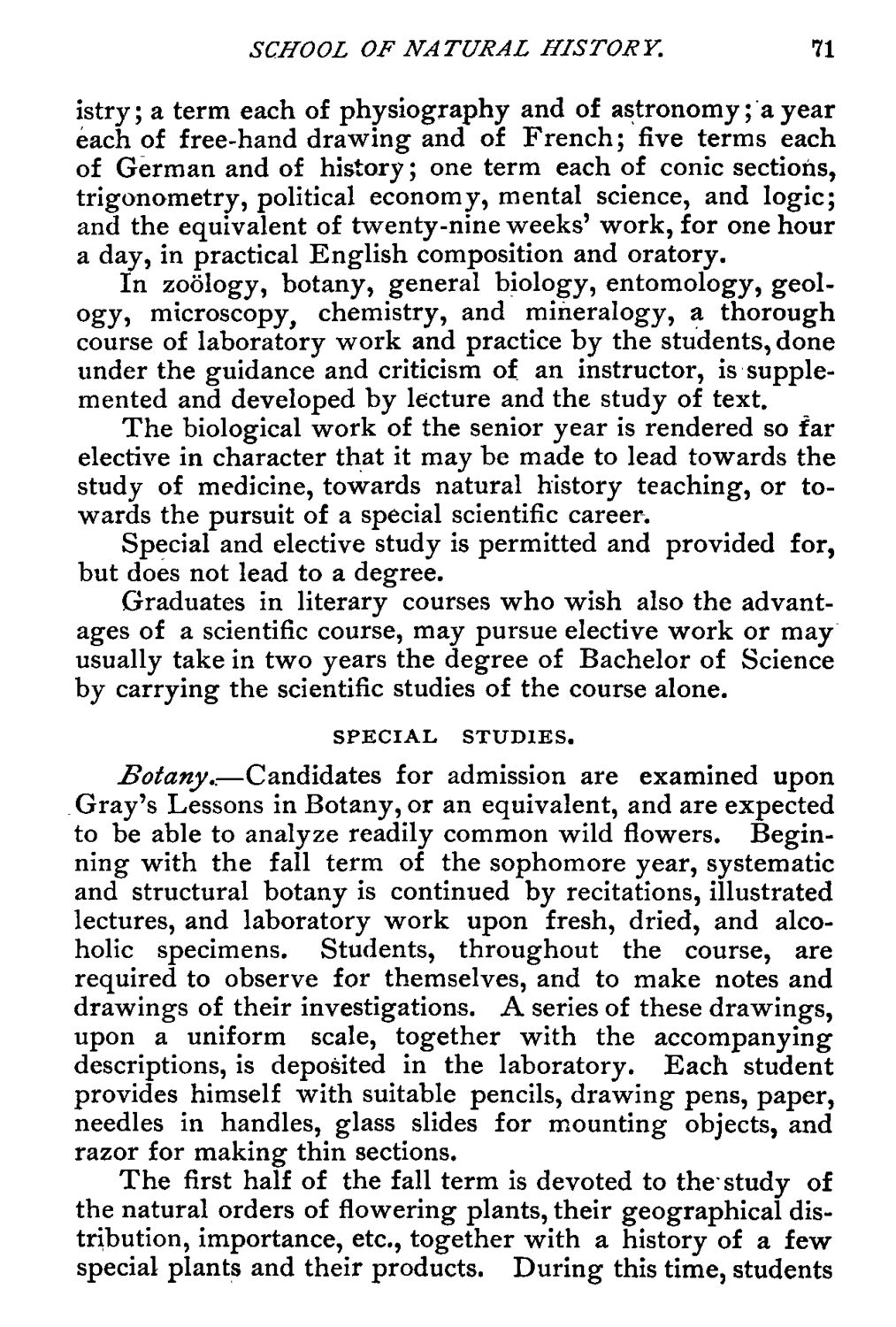| |
| |
Caption: Course Catalog - 1887-1888
This is a reduced-resolution page image for fast online browsing.

EXTRACTED TEXT FROM PAGE:
SCHOOL OF NATURAL HISTORY. 71 istry; a term each of physiography and of astronomy; a year each of free-hand drawing and of French; five terms each of German and of history; one term each of conic sections, trigonometry, political economy, mental science, and logic; and the equivalent of twenty-nine weeks' work, for one hour a day, in practical English composition and oratory. In zoology, botany, general biology, entomology, geology, microscopy, chemistry, and mineralogy, a thorough course of laboratory work and practice by the students, done under the guidance and criticism of an instructor, is supplemented and developed by lecture and the study of text. The biological work of the senior year is rendered so far elective in character that it may be made to lead towards the study of medicine, towards natural history teaching, or towards the pursuit of a special scientific career. Special and elective study is permitted and provided for, but does not lead to a degree. Graduates in literary courses who wish also the advantages of a scientific course, may pursue elective work or may usually take in two years the degree of Bachelor of Science by carrying the scientific studies of the course alone. SPECIAL STUDIES. Botany..—Candidates for admission are examined upon Gray's Lessons in Botany, or an equivalent, and are expected to be able to analyze readily common wild flowers. Beginning with the fall term of the sophomore year, systematic and structural botany is continued by recitations, illustrated lectures, and laboratory work upon fresh, dried, and alcoholic specimens. Students, throughout the course, are required to observe for themselves, and to make notes and drawings of their investigations. A series of these drawings, upon a uniform scale, together with the accompanying descriptions, is deposited in the laboratory. Each student provides himself with suitable pencils, drawing pens, paper, needles in handles, glass slides for mounting objects, and razor for making thin sections. The first half of the fall term is devoted to the'study of the natural orders of flowering plants, their geographical distribution, importance, etc., together with a history of a few special plants and their products. During this time, students
| |